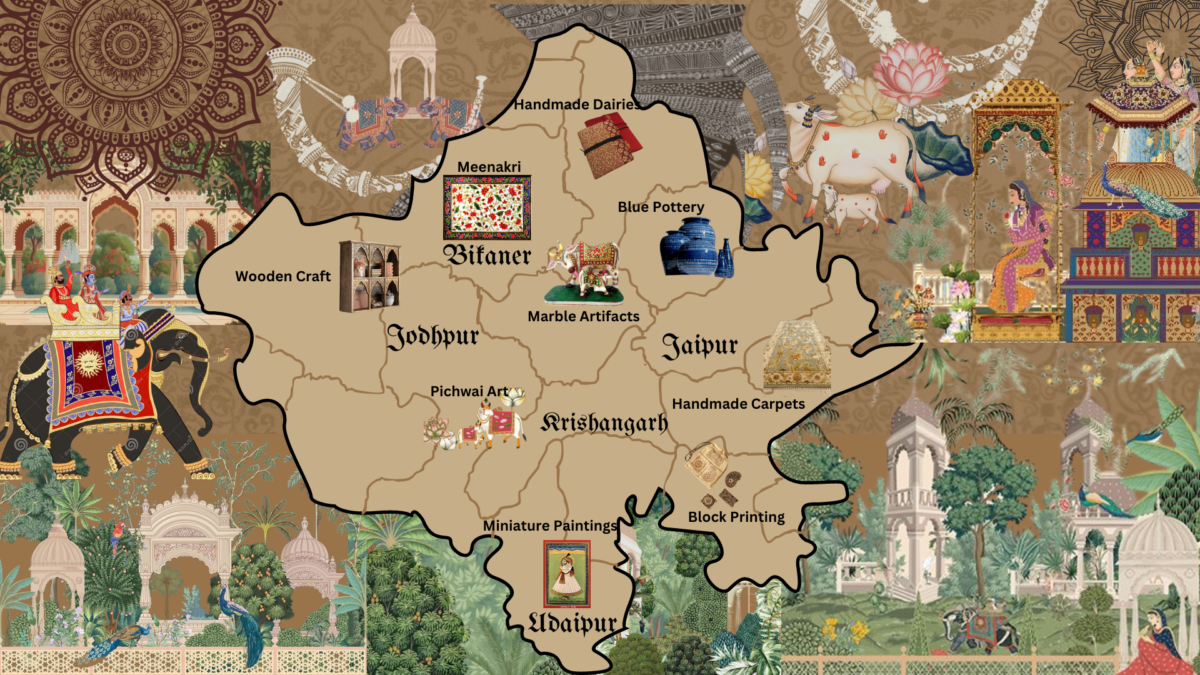Hello world!
June 13, 2022
Crafting Royalty: How Rajasthani Handicrafts Tell the Tales of Famous Maharajas
November 5, 2024
Jaipur, the Pink City of India, is famous for its beautiful architecture, vibrant tradition, and wealthy, inventive history. At the coronary heart of this flourishing town lies the legacy of its founder, Maharaja Sawai Jai Singh II, whose vision now not only best formed the town’s architectural panorama but also greatly prompted its creative expressions. Through his patronage and encouragement of nearby craftsmanship, he laid the muse for a thriving hub of Indian handicraft, making Jaipur a beacon of the Indian historical past.
Maharaja Jai Singh II became a visionary ruler regarded for his love of understanding and the arts. Upon founding Jaipur in 1727, he aimed to create a metropolis that harmoniously blended capability with aesthetics. The meticulously deliberate format of the town reflects his architectural genius, with wide streets, organized sectors, and stunning palaces that continue to enchant visitors nowadays. The City Palace, Hawa Mahal, and Jantar Mantar stand as testaments to his dedication to art and technology, but it was his assistance for neighbourhood artisans that truly set Jaipur aside.
Under Jai Singh II’s reign, the city became a flourishing middle for numerous Indian handicrafts. He identified the colossal expertise of neighbourhood artisans and supplied them with a platform to exhibit their talents. This led to the introduction of excellent Indian artwork that depicted mythological issues, royal court lifestyles, and nature. The intricate miniatures that emerged throughout this period are characterised by way of colourful hues, meticulous detailing, and a deep connection to the nearby subculture, encapsulating the essence of Indian heritage.
One of the maximum sizeable contributions of Maharaja Jai Singh II to Jaipur’s craft scene became the advertising of traditional arts including blue pottery, jewellery making, and textiles. Blue pottery, with its specific turquoise hues and difficult designs, has become a trademark of Jaipur’s craft identity. Artisans perfected this specific craft, which changed into inspired by using Persian strategies and tailored to mirror nearby aesthetics. Similarly, Jaipur’s earrings, recognised for their tricky craftsmanship and use of valuable stones, won popularity far past the location, attracting customers from across the US.
Maharaja Jai Singh II also understood the importance of architectural aesthetics in promoting local crafts. The vibrant murals and ornamental factors found inside the palaces and temples of Jaipur replicate the competencies of neighbourhood artisans. These inventive capabilities serve not best as embellishments however additionally as storytelling mediums that bring the rich records and subculture of the area. This blending of architecture and craftsmanship has made Jaipur a treasure trove of Indian paintings and handicrafts, with the metropolis’s creative legacy deeply rooted in the royal vision.
Today, Jaipur continues to be a thriving middle for handicrafts in India. The annual Jaipur Literature Festival and various art exhibitions in addition promote local artists and craftspeople, ensuring that the traditions fostered through Maharaja Jai Singh II are preserved and celebrated. The metropolis’s bustling markets, consisting of Johari Bazaar and Bapu Bazaar, are packed with colourful handicrafts, supplying traffic with a glimpse into the creative soul of Jaipur.
In the end, the impact of Maharaja Sawai Jai Singh II on Jaipur’s art and craft scene is plain. His patronage and visionary method helped set up Jaipur as a pivotal centre of Indian history and craftsmanship. Today, as we appreciate the architectural marvels and colourful handicrafts, we’re reminded of the royal contact that keeps inspiring and forming this surprising metropolis, making it an enduring image of Indian culture and artistry.


